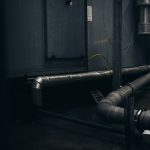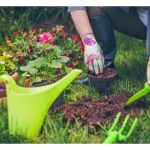A kitchen is one of the most crucial spaces in a home. It is where we cook our meals, sit down to eat, and spend time with our family and friends. But what happens when water damage strikes your kitchen? Water damage in the kitchen can be a real nightmare, and if not dealt with properly, it can lead to long-term damage and mold growth. In this article, we’ll guide you on how to restoration from water damage kitchen and prevent future incidents.
Identify the source of the water damage: Before you start restoration, you must first identify the source of the water damage. The source could be a leaking pipe, an overflowing dishwasher, or a clogged drain. Check your plumbing system and appliances for potential leaks or damages. Once you’ve identified the source, take immediate action to fix it to prevent further damage and avoid having to do secondary restoration.
Assess the extent of the Damage: Assess the extent of the water damage in your kitchen before starting the restoration process. Look out for signs like puddles of water, swollen cabinets, warped floors, and peeling paint. Minor water damage may only require minor repairs while extensive water damage may need professional restoration services.
Dry the Area: Once you have identified the extent of the water damage, it’s time to get to work. Start by drying out the affected area. Wipe down surfaces with a clean cloth, mop up the water with a wet vacuum, and ensure proper ventilation to help reduce humidity levels. Humidity levels exceeding 40% increases the likelihood of mold growth, so a dehumidifier can a useful tool to have on hand.
Disinfect and Sanitize: To remove any traces of bacteria or mold growth that may have occurred, disinfect the entire area thoroughly. Assemble a solution of bleach and water, using one cup of bleach per gallon of water, and use it to wipe down affected surfaces.
Repair or Replace Damaged Parts: Check your cabinets, floors, drywall, and insulation for any damage. Replace damaged cabinets, insulation, drywall, and flooring to restore your kitchen. If the damage is severe, it’s recommended that you seek professional help to avoid causing further damage to the kitchen.
Conclusion:
Water damage is a serious issue that needs immediate attention to prevent further damage to your kitchen. Work quickly to identify the source of the damage, assess the extent of the damage, dry the area, disinfect and sanitize the affected surfaces, and replace any damaged parts. If in doubt, do not hesitate to ask for expert water damage restoration services. Restoring your kitchen after water damage is crucial not only for your home’s aesthetic appeal but also for your personal health and safety. We hope this guide has been useful in helping you get back your kitchen to its former glory.






